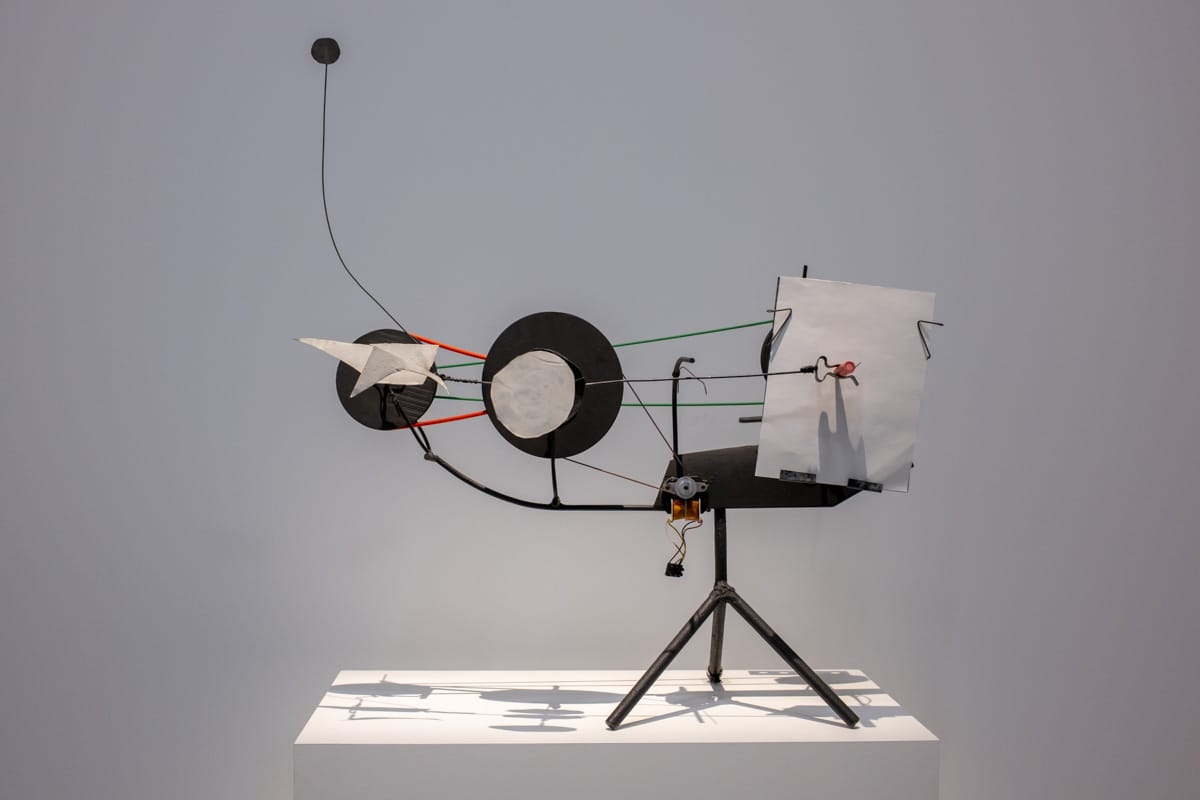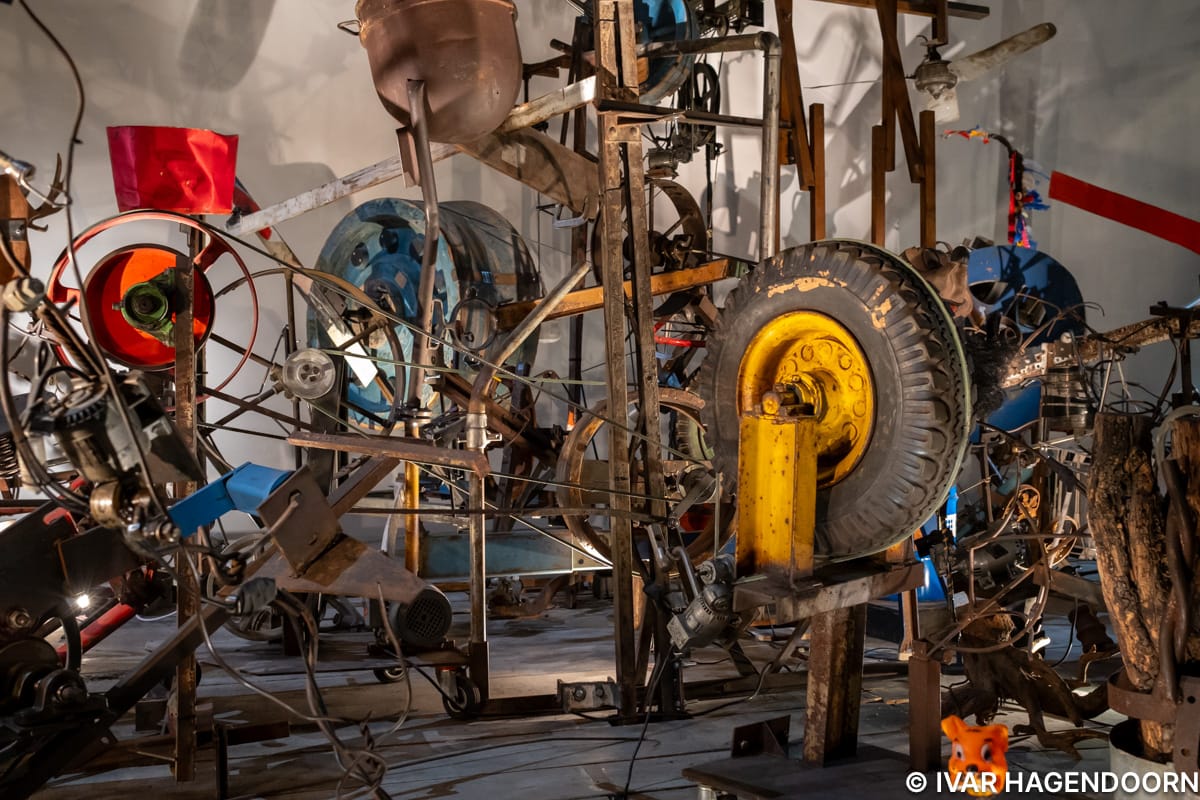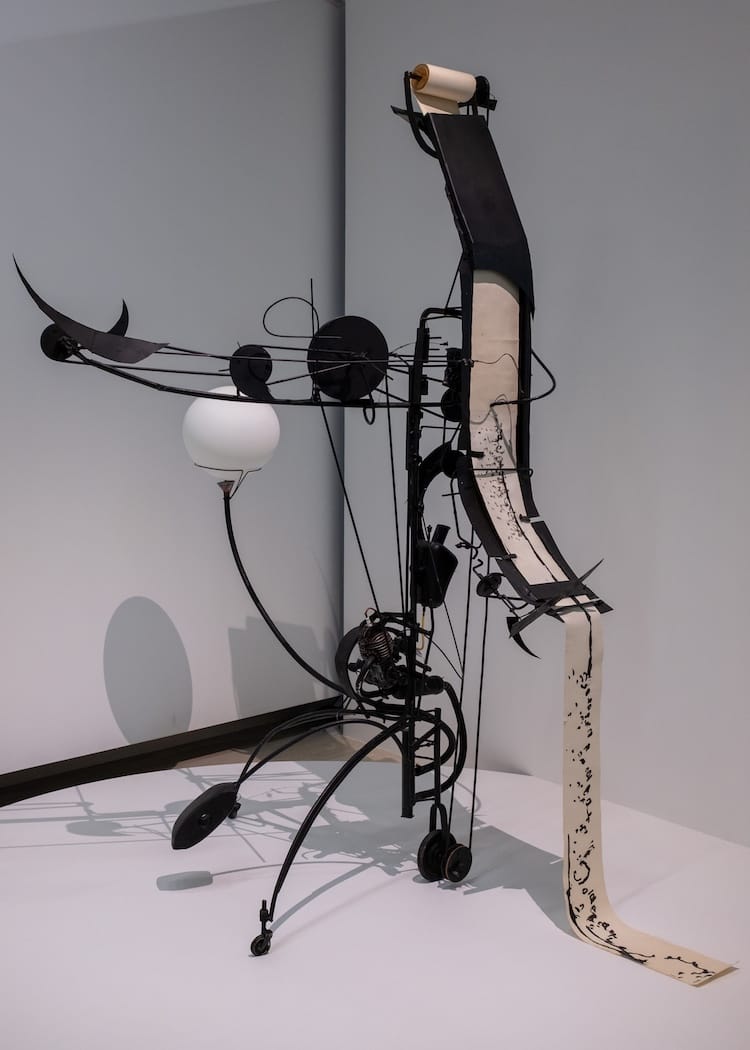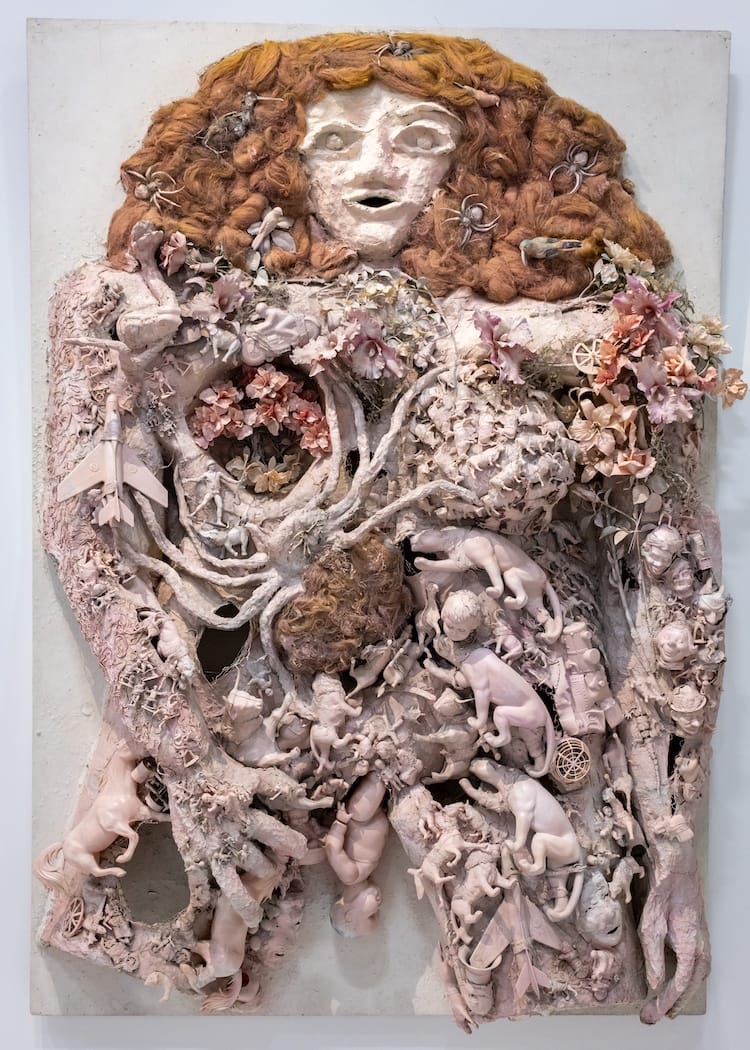
While the Centre Pompidou undergoes an extensive renovation, the recently re-opened Grand Palais has mounted an extraordinary exhibition featuring works by Niki de Saint Phalle (1930–2002) and Jean Tinguely (1925–1991). Drawing primarily from the Centre Pompidou's collection and enriched by loans from French and international museums, the exhibition explores the creative triangle between these two groundbreaking artists and Pontus Hultén, the visionary former director of Stockholm's Moderna Museet and founding director of the Centre Pompidou. An early champion of both artists, Hultén promoted their work throughout his long career, acquiring works, curating landmark exhibitions, and commissioning ambitious site-specific installations.

The exhibition presents solo works by each artist alongside their collaborative pieces. Among the highlights is Tinguely's "L'Enfer, un petit début" (1984), a monumental installation constructed from tires, cog wheels, engine belts, buckets, stuffed animals, and a drum set, a chaotic assemblage that erupts into a cacophony of sounds when activated. One can only imagine the painstaking effort required to reconstruct such a complex work.
I've long admired Tinguely's playful kinetic sculptures, and seeing this extensive selection, many pieces new to me, was a genuine pleasure. Remarkably, all of Tinguely's machines remain functional, springing to life every ten or twenty minutes in brief, exuberant thirty-second performances. If you’re planning on visiting the exhibition it is definitely worth waiting to see at least some sculptures in motion, especially “Méta n° 3” (1970-71) and “Le ballet des pauvres” (1961).


Jean Tinguely, "Meta-matic No. 17" (1959) (left) and Niki de Saint Phalle, "L'Accouchement rose" (1964) (right)
While Niki de Saint Phalle is best known for her Nanas, exuberant, large-scale sculptures of women in motion, running, leaping, and dancing, her earlier work carries a darker psychological weight. Having suffered sexual abuse by her father as a child and a severe depressive episode in her early twenties that led to psychiatric hospitalization, Saint Phalle would later credit art with saving her life. In the early 1960s, she commanded attention with her "Tirs" or Shooting Paintings, assemblages mounted on wooden boards incorporating fabric scraps, children's toys, and paint-filled plastic bags, which she then fired upon with a rifle. You don’t have to be a psychoanalyst to understand the psychological dimension of these works.
The exhibition is a tribute to two remarkable artists, but also to the life-long friendship between Tinguely, Saint Phalle and Hulten. I enjoyed seeing the illustrated letters and postcards that Tinguely and Saint Phalle sent Hultén over the years.
Niki de Saint Phalle, Jean Tinguely, Pontus Hulten at the beautifully renovated Grand Palais is one of many unmissable shows this autumn in Paris.
Niki de Saint Phalle, Jean Tinguely, Pontus Hulten is at the Grand Palais in Paris until 4 January 2026.